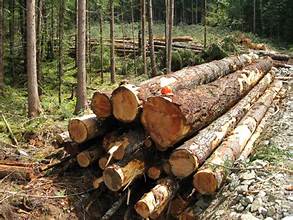
The forest product industry is undergoing a significant transformation as sustainability practices become increasingly crucial. This shift is driven by a growing awareness of environmental issues and consumer demand for eco-friendly products. This article explores how sustainable practices are reshaping the forest product markets this year, highlighting key trends, impacts, and future prospects.
1. Understanding Sustainability in Forest Products
Sustainability in the forest product industry involves managing forests in a way that meets current needs without compromising future generations’ ability to meet their needs. This includes practices such as responsible harvesting, reforestation, and minimizing environmental impact. Sustainable forest management ensures that forests remain healthy and productive while preserving biodiversity and reducing carbon emissions.
2. Key Trends in Sustainable Forest Products
a. Certification and Standards
One of the most significant trends is the increasing adoption of certification schemes such as the Forest Stewardship Council (FSC) and the Programme for the Endorsement of Forest Certification (PEFC). These certifications assure consumers that products come from responsibly managed forests. Companies are increasingly seeking these certifications to meet consumer demands and comply with regulatory requirements.
b. Innovation in Product Development
Innovation is at the forefront of the sustainable forest product market. Companies are developing new products that use recycled materials or alternative fibers to reduce their reliance on virgin timber. For example, engineered wood products, such as cross-laminated timber (CLT) and laminated veneer lumber (LVL), are gaining popularity due to their strength and sustainability benefits.
c. Circular Economy Practices
The concept of the circular economy is gaining traction in the forest product industry. This approach focuses on extending the lifecycle of forest products through recycling, reusing, and repurposing materials. Companies are implementing systems to reclaim and reuse wood waste, which helps reduce the need for new raw materials and minimizes environmental impact.
3. Impact on the Market
a. Consumer Preferences
Consumers are increasingly prioritizing sustainability when making purchasing decisions. This shift is evident in the growing demand for eco-friendly products and certifications. Companies that align with these values are often rewarded with increased market share and customer loyalty.
b. Regulatory Pressures
Governments worldwide are implementing stricter regulations and policies to promote sustainable forestry practices. These regulations often require companies to adopt sustainable practices and provide transparency in their supply chains. Compliance with these regulations can be challenging but is essential for long-term success in the market.
c. Economic Benefits
Sustainable practices can also provide economic benefits. By adopting efficient resource management and reducing waste, companies can lower their operational costs. Additionally, sustainable products often command higher prices, allowing companies to capture a premium in the market.
4. Challenges and Opportunities
a. Balancing Cost and Sustainability
One of the main challenges in the forest product industry is balancing cost and sustainability. Sustainable practices often require significant investment in new technologies and processes. However, companies that successfully manage these costs can gain a competitive advantage and contribute to a more sustainable future.
b. Supply Chain Transparency
Ensuring transparency in the supply chain is crucial for verifying the sustainability of forest products. Companies must work closely with suppliers and implement traceability systems to ensure that their products meet sustainability standards. This can be complex but is necessary for maintaining consumer trust and meeting regulatory requirements.
5. Future Outlook
The future of the forest product markets is likely to be shaped by continued advancements in sustainable practices. As technology evolves and consumer expectations change, companies will need to stay ahead of trends and adapt to new challenges. The integration of sustainability into every aspect of the industry—from sourcing and production to marketing and sales—will be key to long-term success.
In summary, sustainable practices are significantly influencing the forest product markets this year. Certification and standards, innovation in product development, and circular economy practices are driving this change. While there are challenges to overcome, the benefits of adopting sustainable practices—including meeting consumer demands, complying with regulations, and achieving economic advantages—make it a worthwhile endeavor. As the industry continues to evolve, sustainability will remain a central focus, shaping the future of forest products for years to come.


